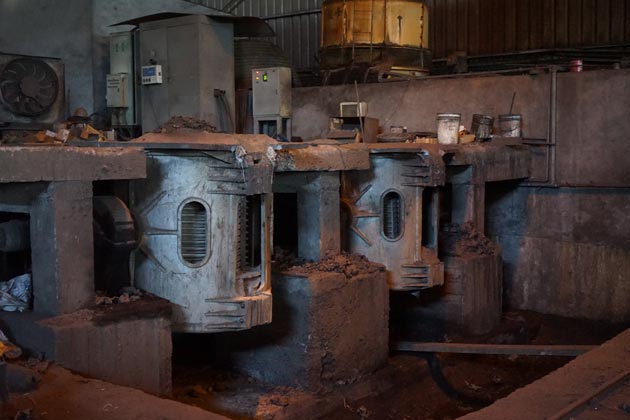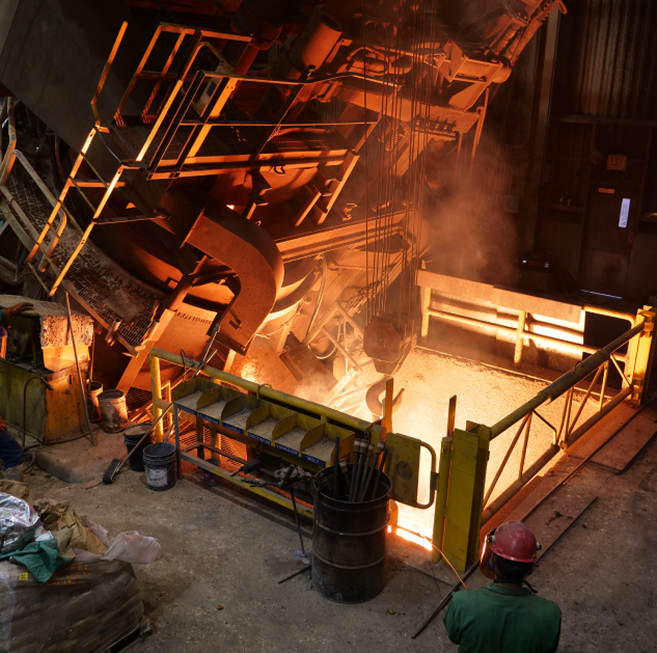Exploring the Role of a Metal Foundry in Modern Manufacturing Processes
Metal foundries are crucial in the landscape of modern-day production. They give vital components throughout various industries, adapting to the needs of markets such as automobile and aerospace. Advanced techniques such as 3D printing and automated casting have actually changed their operations. In addition, sustainability has actually come to be a concern, affecting their practices. As these foundries develop, the effects for manufacturing performance and innovation are substantial, questioning concerning their future trajectory in an ever-changing economic climate.
The Advancement of Metal Casting Strategies

With the surge of automation, foundries took on approaches like die casting and shed foam casting, simplifying the production process and decreasing waste. Each advancement in metal casting strategies has accommodated the demands of various sectors, from auto to aerospace. As metal casting remains to advancement, the interplay between method and technology remains essential in meeting modern manufacturing obstacles, guaranteeing that foundries adapt and flourish in an ever-changing landscape.
Assimilation of Advanced Technologies in Foundries
Conventional metal casting techniques have actually offered the industry well for centuries, the combination of innovative innovations in foundries is reinventing the manufacturing landscape. Automation and robotics streamline production procedures, boosting effectiveness and reducing the threat of human mistake. As soon as impossible with conventional approaches, technologies such as 3D printing permit for fast prototyping and the creation of complicated geometries that were. Additionally, data analytics and the Web of Points (IoT) allow real-time surveillance and predictive maintenance, ultimately resulting in reduced downtime and boosted efficiency. These developments also facilitate customization, permitting manufacturers to react swiftly to market demands. As sustainability ends up being a priority, the fostering of ecologically friendly modern technologies, such as electrical melting heaters and progressed sand improvement systems, additionally shows the market's commitment to innovation. Jointly, these modern technologies not just enhance functional effectiveness but also setting foundries at the forefront of modern manufacturing practices.
The Effect of Product Science on Foundry Procedures
Material scientific research plays a pivotal function in enhancing foundry procedures, influencing both the choice of products and the general casting procedure. Breakthroughs in material scientific research give a deeper understanding of the buildings of alloys and metals, enabling foundries to choose one of the most ideal materials for details applications. This knowledge improves the performance and toughness of cast products, which is necessary for satisfying industry criteria.
Advancements in material formulas and ingredients contribute to boosted casting methods, lowering defects and maximizing production efficiency. The growth of advanced metal compounds and clever materials permits foundries to create lighter, stronger elements, which are significantly searched for in various sectors such as automobile and aerospace.
Additionally, material scientific research help in the recycling of steels, making procedures much more efficient and cost-effective. By leveraging the most recent findings in material scientific research, foundries can adapt to progressing market demands, ensuring their competitiveness in a swiftly transforming production landscape.
Sustainability Practices in Modern Metal Foundries
With the expanding emphasis on ecological duty, contemporary metal foundries are significantly carrying out sustainability practices to minimize their eco-friendly impact (Aluminum Foundry). One key technique includes the recycling of scrap metal, which not only minimizes waste but likewise preserves energy and resources. Foundries are taking on sophisticated melting innovations that improve power effectiveness, consequently lowering greenhouse gas exhausts. Furthermore, using environmentally friendly finishings and products has actually gotten grip, further lowering harmful emissions during manufacturing
Water preservation strategies, such as closed-loop air conditioning systems, are being executed to reduce freshwater usage. Several foundries are likewise investing in renewable energy resources, like solar and wind, to power their procedures, therefore reducing dependence on fossil fuels. Personnel training programs concentrated on sustainability practices promote a culture of environmental awareness within the workforce. These initiatives collectively add to a much more lasting future for metal foundries while satisfying the demands of eco-conscious consumers.
The Future of Foundries in a Transforming Financial Landscape
As the worldwide economic situation progresses, foundries deal with a myriad of obstacles and chances that will shape their future (Aluminum Foundry). The boosting need for light-weight materials and advanced alloys necessitates technology in production methods and technological integration. Automation and clever production techniques are becoming crucial for improving performance and minimizing functional prices. In enhancement, the rise of sustainability worries forces foundries to adopt greener procedures and Metal Foundry recycling initiatives, straightening with worldwide ecological goals
The financial landscape is likewise changing, with supply chain disturbances and rising and fall raw material costs offering considerable difficulties. Foundries should adapt by diversifying their supply sources and buying materials science. Cooperation with sectors such as eco-friendly power and electrical cars can foster development. Inevitably, the future of foundries will certainly rely on their ability to take advantage of technical improvements while continuing to be receptive to market characteristics and environmental imperatives, guaranteeing their significance in modern-day production.
Regularly Asked Concerns
What Kinds of Metals Are Frequently Made Use Of in Foundries Today?
Commonly utilized metals in foundries today include aluminum, iron, steel, zinc, and copper. These materials are preferred for their diverse homes, allowing a broad array of applications in markets such as automobile, aerospace, and building and construction.
Exactly how Does a Foundry Ensure Top Quality Control in Its Products?

What Safety Actions Are Applied in a Metal Foundry?
Metal foundries carry out precaution including individual safety tools, air flow systems to minimize breathing of fumes, normal safety training for staff members, emergency situation feedback methods, and extensive devices upkeep to decrease threats and assure a safe working setting.
The length of time Does the Metal Casting Refine Commonly Take?
The metal casting procedure typically takes a number of hours to days, depending upon elements such as the complexity of the mold, the kind of metal utilized, and cooling down times. Each project's requirements substantially influence the period.
What Industries Largely Count On Metal Foundries for Manufacturing?
Automotive, building and construction, aerospace, and equipment markets largely depend on metal foundries for manufacturing. These sectors make use of cast metals for parts, ensuring resilience and efficiency essential for their corresponding applications in production and setting up processes.
Metal foundries are pivotal in the landscape of modern-day manufacturing. Aluminum Casting. Traditional metal casting techniques have actually served the sector well for centuries, the assimilation of advanced technologies in foundries is transforming the manufacturing landscape. Breakthroughs in product scientific research supply a much deeper understanding of the properties of steels and alloys, making it possible for foundries to choose the most ideal products for specific applications. With the growing focus on ecological obligation, modern-day metal foundries are increasingly applying sustainability practices to reduce their ecological impact. Automotive, equipment, construction, and aerospace markets mainly count on metal foundries for production